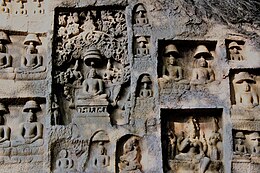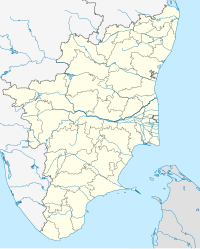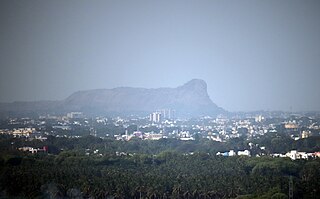Jainism, also known as Jain Dharma, is an Indian religion. Jainism traces its spiritual ideas and history through the succession of twenty-four tirthankaras, with the first in the current time cycle being Rishabhadeva, whom the tradition holds to have lived millions of years ago, the twenty-third tirthankara Parshvanatha, whom historians date to the 9th century BCE, and the twenty-fourth tirthankara Mahavira, around 600 BCE. Jainism is considered to be an eternal dharma with the tirthankaras guiding every time cycle of the cosmology. The three main pillars of Jainism are ahiṃsā (non-violence), anekāntavāda (non-absolutism), and aparigraha (asceticism).

Mahavira, also known as Vardhamana, was the 24th tirthankara of Jainism. He was the spiritual successor of the 23rd tirthankara Parshvanatha. Mahavira was born in the early part of the 6th century BCE into a royal Kshatriya Jain family in ancient India. His mother's name was Trishala and his father's name was Siddhartha. They were lay devotees of Parshvanatha. Mahavira abandoned all worldly possessions at the age of about 30 and left home in pursuit of spiritual awakening, becoming an ascetic. Mahavira practiced intense meditation and severe austerities for twelve and a half years, after which he attained Kevala Jnana (omniscience). He preached for 30 years and attained Moksha (liberation) in the 6th century BCE, although the year varies by sect.

The Śvētāmbara is one of the two main branches of Jainism, the other being the Digambara. Śvētāmbara means "white-clad", and refers to its ascetics' practice of wearing white clothes, which sets it apart from the Digambara "sky-clad" Jains, whose ascetic practitioners go nude. Śvētāmbaras do not believe that ascetics must practice nudity.

Tamil Jains are ethnic-Tamils from the Indian state of Tamil Nadu, who practice Jainism, chiefly the Digambara school. The Tamil Jain is a microcommunity of around 85,000, including both Tamil Jains and north Indian Jains settled in Tamil Nadu. They are predominantly scattered in northern Tamil Nadu, largely in the districts of Tiruvannamalai, Kanchipuram, Vellore, Villupuram, Ranipet and Kallakurichi. Early Tamil-Brahmi inscriptions in Tamil Nadu date to the third century BCE and describe the livelihoods of Tamil Jains. Samaṇar wrote much Tamil literature, including the important Sangam literature, such as the Nālaṭiyār, the Silappatikaram, the Valayapathi and the Seevaka Sinthamaṇi. Three of the five great epics of Tamil literature are attributed to Jains.

Parshvanatha, also Pārśvanātha, Parshva, Pārśva and Parasnath, was the 23rd of 24 Tirthankaras of Jainism. He is the only Tirthankara who gained the title of Kalīkālkalpataru.

The Chitharal Jain Monuments and Bhagavati Temple, also known as Chitharal Malai Kovil, Chitaral Cave Temple or Bhagavati Temple, are located near Chitharal village in Kanyakumari district, Tamil Nadu, India. They consist of stone beds with inscriptions, and two monuments – one rock cut Jain temple with outer wall reliefs and one Hindu goddess temple next to it that is a combination of rock-cut and stone that was added during the reign of Vikramaditya Varaguna Pandya. The monuments are from the 9th century CE.
Kalugumalai is a panchayat town in Kovilpatti Taluk of Thoothukudi district in the Indian state of Tamil Nadu. Kalugumalai is 21 km and 22 km from Kovilpatti and Sankarankovil respectively. The place houses the rockcut Kalugasalamoorthy Temple, monolithic Vettuvan Koil and Kalugumalai Jain Beds.
Jainism is a religion founded in ancient India. Jains trace their history through twenty-four tirthankara and revere Rishabhanatha as the first tirthankara. The last two tirthankara, the 23rd tirthankara Parshvanatha and the 24th tirthankara Mahavira are considered historical figures. According to Jain texts, the 22nd tirthankara Neminatha lived about 5,000 years ago and was the cousin of Krishna.
Jainism is an ancient Indian religion belonging to the śramaṇa tradition. It prescribes ahimsa (non-violence) towards all living beings to the greatest possible extent. The three main teachings of Jainism are ahimsa, anekantavada (non-absolutism), aparigraha (non-possessiveness). Followers of Jainism take five main vows: ahimsa, satya, asteya, brahmacharya (chastity), and aparigraha. Monks follow them completely whereas śrāvakas (householders) observe them partially. Self-discipline and asceticism are thus major focuses of Jainism.
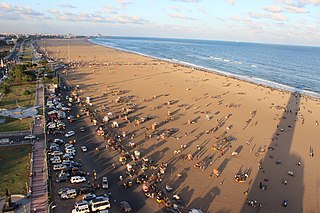
Tamil Nadu has the largest tourism industry in India with a percentage share of 21.31% and 21.86% of domestic and foreign tourist visits in the country. According to the 2020 Ministry of Tourism report, the number of domestic arrivals was at 494.8 million making the state the second most popular tourist destination in the country, and foreign arrivals numbered 6.86 million, the highest in the country, making it the most popular state for tourism in the country.
Cholapandiyapuram or Cholavandipuram or Cholapandipuram is a 1 sq. kilometre village in Tirukkoyilur taluk in Kallakurichi district in the Indian state of Tamil Nadu. Agriculture is the primary occupation of the people who live in this area. In 2011, the village had a population of 1,000 people.

Jainism has an extensive history in the Indian state of Tamil Nadu, although practiced by a minority of Tamils in contemporary times. According to the 2011 India Census, Jains represent 0.12% of the total population of Tamil Nadu, and are of the Digambara sect. Tamil Jains are primarily concentrated in northern Tamil Nadu, in the districts of Madurai, Viluppuram, Kanchipuram, Vellore, Tiruvannamalai, Cuddalore and Thanjavur.

Jain sculptures or Jain idols are the images depicting Tirthankaras. These images are worshiped by the followers of Jainism. The sculpture can depict any of the twenty-four tirthankaras with images depicting Parshvanatha, Rishabhanatha, or Mahāvīra being more popular. Jain sculptures are an example of Jain art. There is a long history of construction of Jain sculptures. Early examples include Lohanipur Torsos which has been regarded to be from the Maurya period, and images from the Kushan period from Mathura.
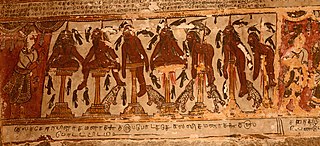
The impalement of the Jains is a 7th-century event, first mentioned in an 11th-century hagiographic Tamil language text of Nambiyandar Nambi. Sambandar defeated the Tamil Jain monks in a series of debates and contests on philosophy, thereby converted a Jain Pandyan king to Shaivism. The episode ended with the impalement of 8,000 Tamil Jains or Samanars as they were called. According to the early version of the legend, the Jains voluntarily impaled themselves in order to fulfill their vow after losing the debate. According to a much later version of the legend found in Takkayakapparani – a war poem, the newly converted king ordered the Jains to be impaled at Sambandar's instigation. The Pandyan king, variously called "Koon Pandiyan" or "Sundara Pandyan" in the legend is identified with the 7th century ruler Arikesari Maravarman.

Jain art refers to religious works of art associated with Jainism. Even though Jainism has spread only in some parts of India, it has made a significant contribution to Indian art and architecture.
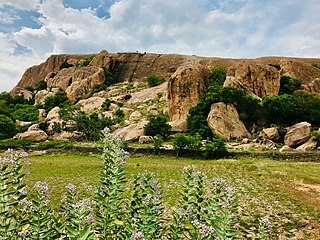
Samanar Hills, also known as Samanar Malai or Amanarmalai or Melmalai, is a rocky stretch of hills located near Keelakuyilkudi village, 10 kilometres (6.2 mi) west of Madurai city, Tamil Nadu, India. They stretch east–west over 3 kilometers towards Muthupatti village. These rocky hillocks are home to many Jain and Hindu monuments. The hill has been declared as a protected monument by the Archaeological Survey of India.

Vettuvan Koil in Kalugumalai, a panchayat town in Thoothukudi district in the South Indian state of Tamil Nadu, is a temple dedicated to the Hindu god Shiva. Constructed in the Pandyan Architecture and rock cut architecture, the unfinished temple was built during the 8th century CE by the early Pandyas. The other portions of Kalugumalai hillock houses the 8th century Kalugumalai Jain Beds and Kalugasalamoorthy Temple, a Murugan temple.

Trilokyanatha Temple, also called Thirupparuthikundram Jain temple or Jeenaswamy Trilokyanathar temple, is an 8th-century Digambara Jain temple in Thiruparthikundram, in northeast Kanchipuram in Tamil Nadu, India. The suburb and the area around this temple is also called Jain Kanchi. The stone temple is dedicated to the Jain Tirthankaras, but is notable for integrating Hindu deities with Jain deities within the premises of the temple, particularly as Ksetrapalas. Constructed in Dravidian architecture, the temple was built during the reign of Narasimhavarman II of the Pallava dynasty. The temple was expanded by the Jain community with financial support of Medieval Cholas, later Pallavas and Vijayanagar kings.

The Pandyan empire is believed to have first emerged circa 600 BC and was one of the leading Tamil dynasties of Southern India. There were various forms of art and many architectural communities within the empire, and their work was sold to overseas markets. Rock cutting and structural temples are examples of these, playing a significant role in Pandyan culture. The rock carvings typically depicted religious figures, floral motifs and animals and were made to surround temples and shrines.
